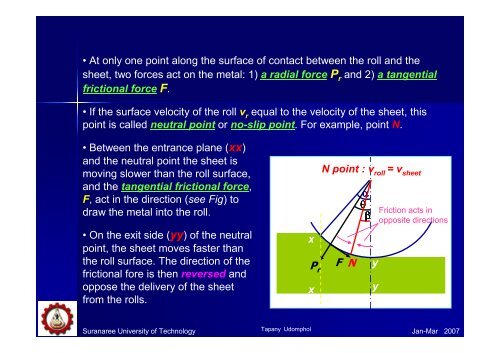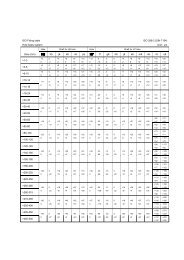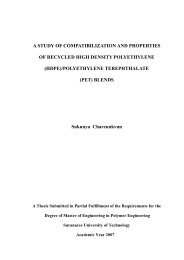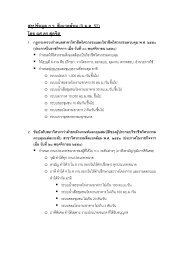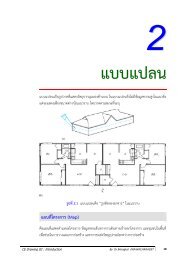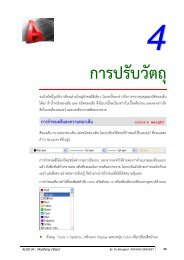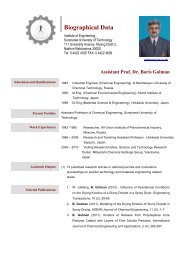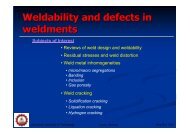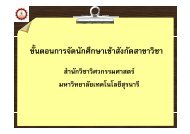Chapter 3 - Rolling of metals
Chapter 3 - Rolling of metals
Chapter 3 - Rolling of metals
You also want an ePaper? Increase the reach of your titles
YUMPU automatically turns print PDFs into web optimized ePapers that Google loves.
• At only one point along the surface <strong>of</strong> contact between the roll and the<br />
sheet, two forces act on the metal: 1) a radial force P r and 2) a tangential<br />
frictional force F.<br />
• If the surface velocity <strong>of</strong> the roll v r equal to the velocity <strong>of</strong> the sheet, this<br />
point is called neutral point or no-slip point. For example, point N.<br />
• Between the entrance plane (xx)<br />
and the neutral point the sheet is<br />
moving slower than the roll surface,<br />
and the tangential frictional force,<br />
F, act in the direction (see Fig) to<br />
draw the metal into the roll.<br />
• On the exit side (yy) <strong>of</strong> the neutral<br />
point, the sheet moves faster than<br />
the roll surface. The direction <strong>of</strong> the<br />
frictional fore is then reversed and<br />
oppose the delivery <strong>of</strong> the sheet<br />
from the rolls.<br />
Suranaree University <strong>of</strong> Technology Jan-Mar 2007<br />
x<br />
P r<br />
x<br />
Tapany Udomphol<br />
N point : v roll = v sheet<br />
F<br />
N<br />
α<br />
θ<br />
β<br />
y<br />
y<br />
Friction acts in<br />
opposite directions


